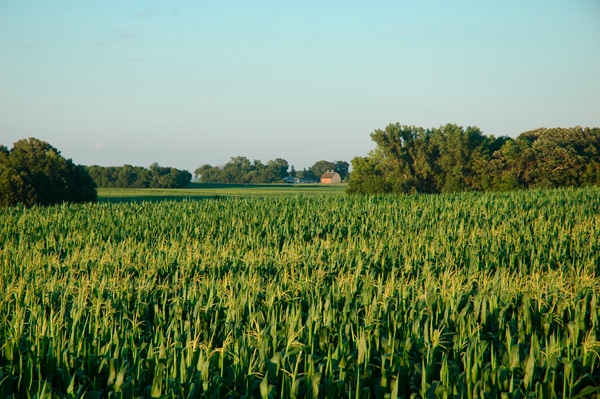May 31, 2016

In March 2016, the Federal Reserve Bank in Minneapolis reported a decline in the average value of non-irrigated cropland of 3.5 percent in the north-central states, compared to a year earlier. This included a 4.3 percent annual decline in farmland values in Minnesota, a drop of 4.6 percent in both Wisconsin and North Dakota, and a decline of 1.6 percent in South Dakota. Montana had the largest year-to-year decline, with a drop in land values of over 24 percent. These land value results were based on a survey of agricultural banks in the listed states, conducted by the Federal Reserve Bank.
Many agricultural experts and economists have been warning for the past few years that we could be headed for a significant correction in farmland values in the Midwest. Based on recent data, there appears to be evidence that a reduction in average land values has been occurring in some regions of the U.S., including the Upper Midwest. Much lower corn and soybean prices in 2014 and 2015 have resulted in significant reductions in farm income levels, thus putting downward pressure on average land values in many areas.
In contrast to most other land value surveys, the USDA Land Value report released in July 2015 showed that average farm real estate values increased by 2.4 percent across the United States from June 2014 to June 2015. The USDA survey involves only producers, and includes the value of farmland, along with the value of buildings and improvements. The USDA survey did show an average decline of 1.1 percent in Minnesota farmland values, and a decline of 5.9 percent in Iowa. The USDA land value survey results are somewhat more optimistic than most other land value surveys, and more favorable than analysis from most noted land economists.
Iowa State University does a comprehensive land value survey each December, which is regarded as one of the best resources on trends in Midwest farmland sales. Iowa farmland values rose at an incredible pace from 2000 to 2013, with only one minor decline in 2009, before more significant declines of 8.9 percent in 2014, and 3.9 percent in 2015. This was the first time that the Iowa land value survey has shown two consecutive years of decline since 1998 and 1999. The 2015 Iowa Farmland Value Survey showed a decline in land values in eight of the nine crop reporting districts, with the greatest decline at 6.7 percent in the north-central district. Only the northwest district showed a slight increase of 0.7 percent in land values in December 2015, compared to December 2014.
Trends in farmland values in southern Minnesota are probably fairly close to the trends shown in the Iowa land value survey, reflecting the lower crop prices and tighter profit margins. Similar to Iowa, land values in portions of southeast and south-central Minnesota have shown a greater decline than some other areas of the state, such as southwest Minnesota. Some isolated land sales across southern Minnesota have still been reported at fairly high values per acre; however, the overall trend in the past 18-24 months has been a decline of 10-20 percent from the peak land values in 2013 and early 2014.
One of the best sources of farm real estate values in Minnesota is the University of Minnesota Land Economics website. This website is updated annually after September 30, and accesses a data base of various land values, based on farm land valuations reported to the state revenue office by county assessors offices throughout the state each year, which are adjusted annually based on actual land sales in a given county. This website allows for selected sorts by county, state economic regions, watersheds, etc., as well as by types of land.
Record 2015 crop yields in many areas of the Upper Midwest, along with some improvement in crop prices in spring 2016, has seemed to stabilize land values somewhat during the first few months of the year. Most likely, the future trends in crop prices, along with the level of 2016 crop yields and livestock profitability, will determine if land values continue to stabilize, or if we see further declines in land values later in 2016 into 2017. An increase in interest rates by the Federal Reserve Bank in the next year or two would also likely have a negative impact on land values. The good news is that there still seems to be fairly good demand by both farm operators and investors to purchase land, especially when it drops to a certain level.
About the Author(s)
You May Also Like




